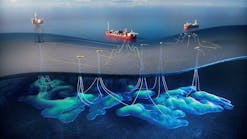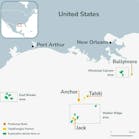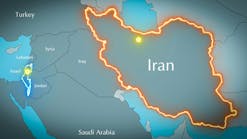Pent up demand and deregulation continue to help drive North American demand for high-efficiency gas and steam turbines.
Sales jumped an extraordinary 339% in 1999 from 1998, according to consultants Frost & Sullivan, San Jose, Calif., generating industry revenue of $8.22 billion. Company research suggests sales will continue to be strong through 2006, while declining slightly from 1999 levels.
Some turbine manufacturers have reported order backlogs stretching into 2004.
"GE and Siemens-Westinghouse can't keep up," says Frost & Sullivan energy research analyst Max Mayer. At least one manufacturer with a big backlog has stopped taking orders out of fear of future cancellations.
Mayer says combined cycle configuration is a driving force in the gas and steam turbine markets.
"This type of configuration can often near 60% efficiency, compared to a single gas turbine in a simple cycle that generates 35-40% efficiency," says Mayer.
In a combined cycle configuration, a steam turbine is added to the system to increase efficiency. The discharged gases from the gas turbine are captured in a heat recovery steam generator and used to drive a steam turbine which turns a crank linked to an electrical generator.
"This configuration has contributed to the market for associated products like steam turbines and heat recovery steam generators, which have both shown solid increases in sales," Mayer says.
The combined cycle configuration allows greater versatility for power producers. With a two-gas, one-steam turbine setup, one of the gas turbines can be turned off during low-load or maintenance periods, while the rest of the machine continues to run.
Demand is extremely strong for the big F Class 240 Mw gas turbines which cost about $40 million each, Mayer says, excluding the heat recovery steam generator and steam turbine. That's up from about $30 million 3 years ago. He says manufacturers are at work on even more efficient models. Slight improvements in efficiency percentages translate to lower costs for power plants and thus lower prices for electricity.
"Just a small increase really adds up over a year's time," he says.
Turbine demand is strongest in the US, much more so than is Europe, Mayer says. Despite backlogs among major manufacturers and rising prices, the market is unlikely to attract competitors. It is both capital intensive and there are no foreign makers that can suddenly begin "shipping units into the US," he says.
With demand for new units so strong, Mayer says, an active secondary market in used turbines has developed.


